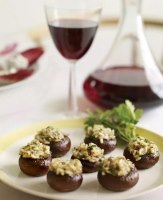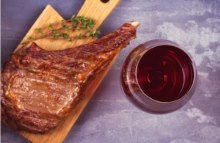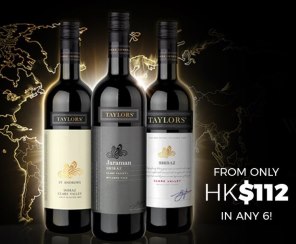Food and Wine Pairing Guide

Food and wine pairing when done well will improve your enjoyment of what you are eating. Whilst food changes the way the wine tastes, the opposite is also true, opening up new flavours. Understanding the general rules to food and wine pairing will help you choose the right wine that fits your personal preferences and the occasion.
A great food and wine pairing creates a balance between the components of a dish and the characteristics of a wine. Different wine types should be paired with different foods. Generally white wines are linked to starters and fish. Young red wines are linked to first courses, meat and cheeses. Aged wines best compliment meat and game dishes. Sparkling wines can also be used for desserts.
Sweets
 Foods that are high in sugar will make a wine lose its fruity flavour and taste more bitter and acidic. This is because taste buds are impaired by the sugar in the food. Choosing a wine that doesn’t compete against the dish, but actually complements it, means finding a wine with a higher level of sweetness. Sparkling wines work well with fresh fruit desserts and Cabernet Sauvignon with dark chocolate is another good pairing.
Foods that are high in sugar will make a wine lose its fruity flavour and taste more bitter and acidic. This is because taste buds are impaired by the sugar in the food. Choosing a wine that doesn’t compete against the dish, but actually complements it, means finding a wine with a higher level of sweetness. Sparkling wines work well with fresh fruit desserts and Cabernet Sauvignon with dark chocolate is another good pairing.
Savoury or umami
 The earthy taste of savoury (also termed umami) foods are difficult to pair because of the variation in salt levels contained in different meals. High umami foods with low salt levels pairs will with a sweet or off-dry wine like Muscadet.
The earthy taste of savoury (also termed umami) foods are difficult to pair because of the variation in salt levels contained in different meals. High umami foods with low salt levels pairs will with a sweet or off-dry wine like Muscadet.
High umami content with a high salt level need a more acidic wine. Umami usually makes wine taste more acidic, with a loss of some of the fruitiness. Good pairings here would be a wine that has plenty of fruit, with levels of acidity and sweetness depending on the saltiness of the dish. Pinot Noir has an earthiness that goes well with stuffed mushrooms with garlic butter.
Salt
Salt adds to the body of the wine and reduces its acidity levels. You can pair many wines with salty foods, the classic being the matching of seafood to a crisp white wine such as a Pinot Grigio.
Acidity
Tart foods remove some of the wine’s acidity whilst increasing its fruitiness and body. Pair highly acidic foods with a wine with a highly acidic flavour. White wines including Sauvignon Blanc are well suited to tomato-based dishes. Pinot Grigio works very well when paired with acidic, oily foods. Italian reds also have a high level of acidity, such as Montepulciano and Chianti, and work well with heavy oily meals. Burgundy works particularly well with roast duck, as does Pinot Noir.
 As well as the acidity, consider the weight of the meal and match this with the weight of the wine. Oily fish like smoked salmon work well with white wines and Champagne. Heavy oily dishes such as lasagne work better with reds that have a good level of acidity.
As well as the acidity, consider the weight of the meal and match this with the weight of the wine. Oily fish like smoked salmon work well with white wines and Champagne. Heavy oily dishes such as lasagne work better with reds that have a good level of acidity.
You can alter your food dishes to make them a better match for the wine. For example, adding a tangy cheese to a salad makes for a good match with a tangy Sauvignon Blanc or some toasted nuts on top of a dish pairs well with a nutty Chardonnay.
Try to match the weight of the meal with the weight of the wine too, so oily fish such as smoked salmon and caviar work better with whites and Champagne
Spice
Depending on your preferences with the heat from spices, the important thing to know when pairing food and wine is that wines with a higher alcohol content will increase the heat sensation, whilst a lower alcohol content will reduce the heat sensation. A 15% alcohol content wine will intensify the food or try a Sauvignon Blanc that will lift the flavours because of its acidity. A light red wine like a Beaujolais is also a good choice, rather than a heavier flavour that can drown out the spices.
Bitterness
 Naturally bitter foods will make your wine taste bitter too, though this differs from person to person. Tannins in wine also add a bitter flavour and are more commonly found in red wines and white wine that has been aged in oak barrels. When it comes to pairings, the general rule is that the more textured or fatty the meal, the more tannin you need. In many wine events and festival we can see pairing a steak with a Cabernet Sauvignon or a Malbec.
Naturally bitter foods will make your wine taste bitter too, though this differs from person to person. Tannins in wine also add a bitter flavour and are more commonly found in red wines and white wine that has been aged in oak barrels. When it comes to pairings, the general rule is that the more textured or fatty the meal, the more tannin you need. In many wine events and festival we can see pairing a steak with a Cabernet Sauvignon or a Malbec.
Test your preference by pairing 85% dark chocolate with a Rioja. If this intolerable, choose a wine with less tannin.
Sweet and savoury
A mix of sweet and savoury works not just in food pairings, but also with food and wine. Stilton and port is a good example of a sweet and savoury pairing.
Fatty foods
If you have a hearty stew, you can pair with a crisp Riesling that takes the edge of the heaviness of the dish.



